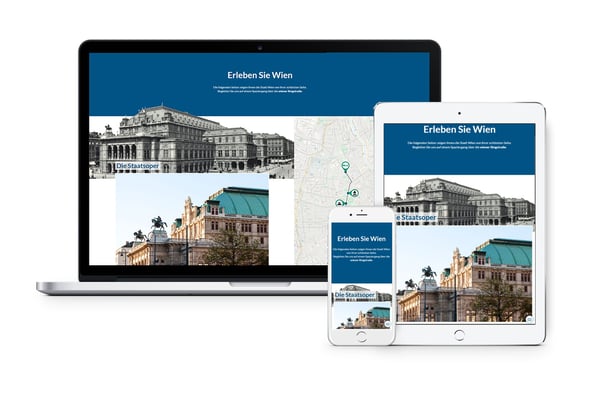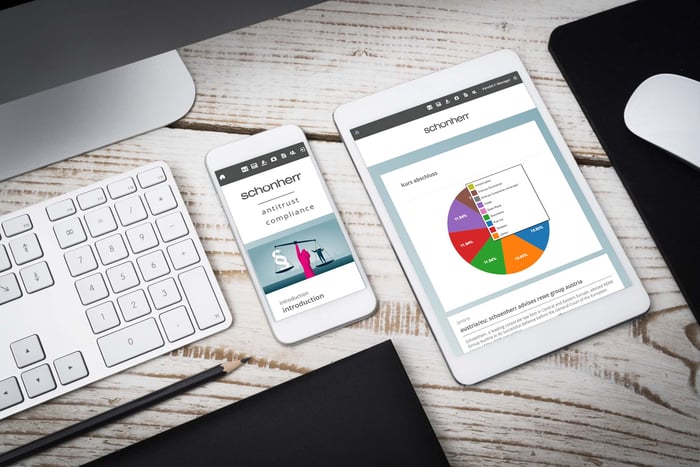Sven Laux, project leader of Adapt Learning, of which LearnChamp is one of the official collaborators, talks about how the collaborative approach to developing learning software will help spread these tools in the not-for-profit, public and education sectors as well as developing countries, SMEs and small Learning & Development teams, how open source development changes the way companies calculate resources and why more clients will add open source solutions to their portfolio in the future.
It seems the perception and use of “open source” solutions has changed over the last five to ten years – is that true?
Sven: Yes, that’s right. In the case of our responsive learning software Adapt, this is no different. When tablets and smartphones became viable devices for consuming learning materials, many clients needed to get away from Flash-based solutions replace them with materials that will work both on desktops as well as handheld devices. Adapt is freely available and solves this problem. It’s great to see its rising uptake and global mass adoption.

Can you list some of the advantages of open-source for customers?
Sven: Adapt is licensed under the GPL v3.0 license. This means it’s free and there isn’t a license fee for the software itself. Everybody can use the code and modify it for their needs.
It’s also vendor independent. This means a client can upskill their own team to use it or hire a service provider of their choice, as opposed to the company who owns the software as is the case with proprietary systems. It even allows them to change service provider along the way without having to change the system. This offers a lot of control, keeps costs low and puts the emphasis on good customer service.
But aren’t the costs simply shifted somewhere else – are human resources the new currency in open source developments?
Sven: Take Adapt’s collaboration with LearnChamp for example: They have injected resources into the Adapt project since 2014 and to date the Adapt project has not exchanged a single pound worth of money. Instead, we used contributions in terms of people’s time and resources. So it is true that people’s skills and time are a currency in open source.
So what is the value and where does profit eventually come from in open source solutions?
Sven: As for the Adapt open source project itself, the value is in our community, the recognition of our brand and the project’s ability to help the community to solve a given problem. In our case, that’s the provision of technology for the creation responsive eLearning materials. This remains the reason for our existence.
As mentioned, we’ve managed to get to where we are without exchanging money and are successfully providing a solution to a common problem in the industry. We know we have to work professionally and work hard to stay relevant. Our ongoing success will depend upon our ability to harness the efforts from our community and the official partners (collaborators).

… and what’s the secret to success?
Sven: Having a good solution to a relevant problem, a low barrier to entry and a friendly and helpful community, willing to spread the word about Adapt!
At this stage, we’re really pleased to have a thriving community and visitors from more than 200 countries worldwide. We took the conscious decision not to force people to sign up to keep a low barrier to entry so we don’t know the full extent of Adapt’s uptake. However, we can tell that Adapt is well known and a talking point at the various international industry conferences. It’s also great to have won several awards already.
We feel very encouraged to continue on striving towards our vision and staying friendly, approachable and helpful to the community are a big part of this. We’re always keen for more people and organisations to get involved and are committed to looking after our ambassadors.
One question many people are still not sure about: Is open source safe?
Sven: Security is a general concern for all systems, whether they are open source or proprietary. It is a myth that open source software is inherently less secure than proprietary equivalents. Each system should be thoroughly assessed on its own merits.
It is true that with open source software issues and bugs are more easily visible but at the same time, on a well-organised project, the visibility will lead to the issue being fixed quickly. As Eric Raymond says in the Cathedral and the Bazaar: “given enough eyeballs, all bugs are shallow”. Consumers often forget that proprietary systems have the same types of issues, too. These may not be discovered and fixed as quickly as they would on a very active open source project.
With open source systems, end users can potentially exercise greater control over security. For instance, if security is a concern, users can commission a penetration (security) test, which will show up areas in need of tightening up. This will result in the greatest possible confidence in the security of a given system, but often isn’t permitted on proprietary alternatives.
Regardless, the key thing is to keep the software up to date and make sure to install the patches addressing bugs and security fixes. In my experience, too many users don’t update their software as often as they should to keep their systems secure.
Will Adapt remain a free, open source software?
Sven: Yes, definitely. Our license prevents anyone from selling the code but it permits selling services around it. For instance, a developer might charge someone for the time spent developing a new theme or an eLearning company can charge for the creation of a bespoke learning module, but the Adapt source code will always be free and freely available.
Do you think “open source” will be used much more in future?
In the case of Adapt, sharing the work has enabled us to build something none of the partners would realistically have done to the same extent, while also providing a benefit to a global Learning & Development community. I think with Adapt we have created a situation where anyone who is looking for an eLearning authoring tool has to at least consider it. It might not be right for everyone’s needs but putting it on the list of options to look at should be a no brainer – and it will keep getting better and easier to access.
There is a definite movement towards open source. It is being adopted nearly everywhere to a greater or lesser extent. Many government procurement frameworks now make the consideration of open source options mandatory where these exist and we’re also seeing leading corporations adopt open source and even share their code under open source licenses. Google, Facebook and NetFlix are just some examples. Further to this, there are lots of very mature and stable open source code libraries (i.e. helper functions), which save huge amounts of time and cost and can be found all over the Internet.

Is a responsive, single resource software like Adapt the future of e-learning… and how does it have to ‘adapt’ further?
Sven: Today, Adapt solves a relatively basic problem for eLearning, i.e. the ability to create a single learning resource, which delivers an intuitive and suitable user experience on multiple device types. Mobile devices are here to stay and the problem and solution will stay relevant to eLearning for the foreseeable future.
With Adapt, we’re still focused on developing the authoring tool to make it easier for non-technical users to access and bring in the many features we have planned. However, many partners are already pushing the boundaries on what’s possible to do within the learning resources. This includes for example: interactive video, gamification and branching scenarios.
It’s also very exciting that the community are building out xAPI tracking, which connects with the thinking on Big Data and learning analytics in the industry. And then, there is what’s termed ‘adaptive learning’, where the content gauges the learner’s level and adjusts accordingly. There is a very exciting future ahead!
Check out a responsive eLearning content, developed by LearnChamp with Adapt:
http://adapt.learnchamp.com/community/demo/vienna/#/id/co-05


